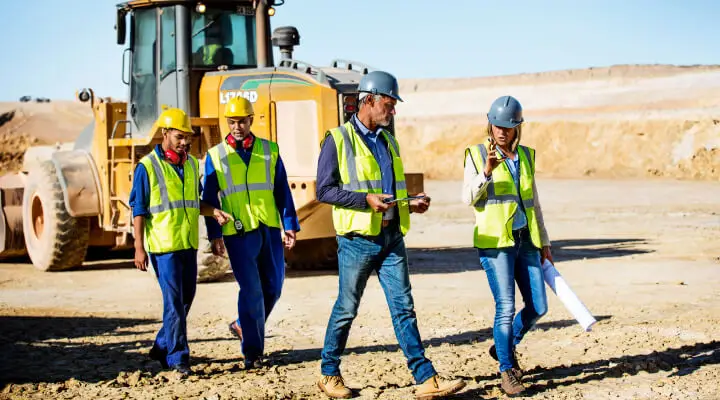Everyone wants the people coming to work for them to be safe. But sadly even with strict legislation, workplace injuries still happen. So, what can we learn from common workplace injuries and how can we translate that into a safer workforce?
Each year, Safe Work Australia releases key Work Health and Safety statistics, providing an insight into common workplace injuries and fatalities. Within these devastating numbers are lessons to be learnt which can be applied to your workplace. Especially when there’s a common thread among the main culprits.
The 6 most common causes of fatalities in 2020
In 2020, there were sadly 194 workplace deaths recorded in Australia. Of those fatalities, they occurred by:
- Vehicle collision* (80)
- Being hit by moving objects (25)
- Falls from a height (22)
- Being hit by falling objects (17)
- Being trapped by moving machinery (13)
- Being trapped between stationary and moving objects (11)
Twenty-six occurred by other methods.
*vehicle collisions include fatalities that occurred as a direct result of a vehicle crash. Vehicles include not only road vehicles such as cars and trucks, but also machines such as aircraft, boats, loaders, tractors and quad bikes.
The 8 most common causes of incidents in 2020
In 2020, there were a staggering 120,355 ‘serious claims’ (workers’ compensation requiring at least a week off work) related to workplace injury and disease in Australia. Those incidents occurred by:
- Body stressing (44,420)
- Falls, trips and slips of a person (27,819)
- Being hit by moving objects (19,417)
- Mental stress (10,084)
- Hitting objects with a part of the body (8,713)
- Vehicle collisions (2,640)
- Heat, electricity and other environmental factors (1,679)
- Chemicals and other substances (1,094)
Other causes accounted for 4,489 claims.
Before we continue
It’s important to remember that behind every number is a person. Someone with family and friends. Someone with a life outside of their job. A person who expected to go to work and be safe.
It’s why safety is our mandate at Pegasus. No one wants to be responsible for the death or injury of someone else because of poor workplace safety.
There are many lessons here.
What can we learn from this?
We can see some common culprits on both lists: vehicles, falls, and being hit by moving objects. Knowing this, what can you do?
First up, it’s time to conduct a risk assessment on your sites and projects (we’ve covered this before here). If you don’t know where to begin, start with the common places outlined above and apply them your business. Is there something that needs to be changed to ensure further safety? Do you have proper processes in place to diminish the level of risk?
Next, it’s time to look at training. Safe Work Australia has a wealth of resources and training around working from heights, in vehicles, with machinery, the list goes on. Making use of a Learning Management System (LMS) and having regularly scheduled training for your workers can help reduce workplace injuries and death.
Another often overlooked step is having role-specific safety requirements.
The importance of role-specific safety requirements
From ensuring you have the appropriate ergonomic set up for office workers, to knowing how to safely operate heavy machinery, every role in every job has safety requirements. And it’s up to everyone, as well as your business, to know these requirements and follow them.
Every workplace, from film sets to ALDI supermarkets has special and specific job requirements. Because these roles are all slightly different, how to be safe within your role will be different too.
It’s in the specificity where Pegasus shows our strength.
Pegasus is experienced in the details
Business rules are where we help with specificity. We can create a business rule for anything. One of the benefits from our years of experience is the knowledge we’ve gained working across industries and clients.
In fact, within the Pegasus system we have nearly 14,000 work roles across 1,855 locations. That means there are nearly 14,000 individual and distinct work roles (even more when you look at how the same role might differentiate between industries) with varying safety requirements, something we’ve helped our clients develop.
Because we understand safety isn’t a one-size-fits-all.
When you tailor the specific and clearly communicate these expectations with your workers, and train them properly, you’re setting your business up for success, while improving safety.
And there’s nothing more important to your business than keeping your workers safe.
Talk to the safety experts at Pegasus today about how to increase safety in your workforce.





